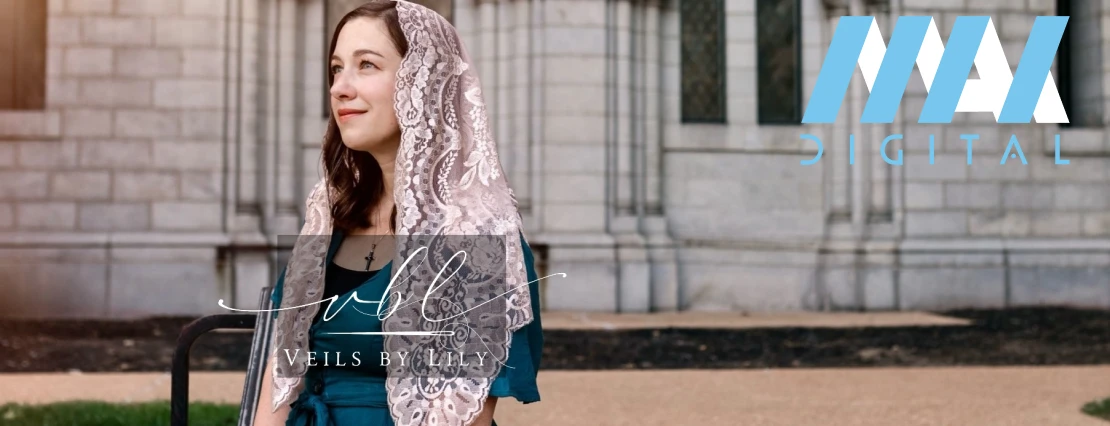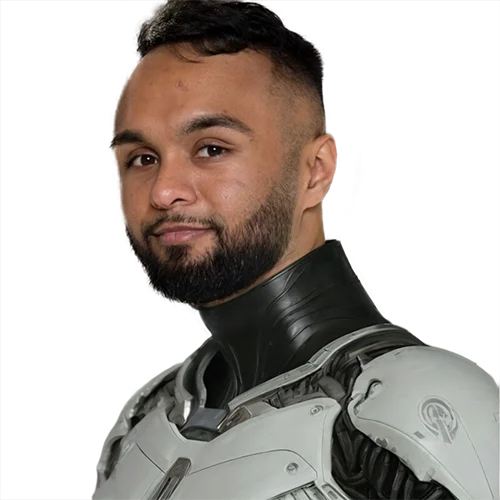
Website speed is one of the most critical yet often overlooked factors in eCommerce. A slow-loading website can frustrate visitors, lead to abandoned carts, and negatively impact search rankings. In an industry where user experience and convenience are paramount, ensuring a fast and smooth browsing experience is essential for driving conversions and customer satisfaction.
Veils by Lily, a retailer specializing in traditional Catholic veils, faced website performance issues that hindered their user experience. Their site had slow-loading product pages, inefficient image rendering, and excessive scripts bogging down performance. These factors contributed to higher bounce rates and reduced conversions, particularly on mobile devices.
At MAKDigital, we stepped in to enhance the speed and efficiency of their site by optimizing how product images were rendered, streamlining backend processes, and implementing industry best practices. The impact was immediate—faster page loads, improved SEO rankings, and an overall smoother shopping experience.
What is Website Speed Optimization?
Website speed optimization is the process of improving how quickly a website loads and functions. Every second counts in eCommerce. Research shows that a one-second delay in page load time can result in a 7% decrease in conversions, meaning a sluggish website can cost thousands in lost revenue.
A fast website ensures a seamless browsing experience, keeps visitors engaged, and helps improve search engine rankings. Google prioritizes websites with fast load times, making site speed a crucial component of SEO. Beyond rankings, speed optimization also reduces server load, increases efficiency, and ultimately improves the overall functionality of a website.
Why We Did This for Veils by Lily
Veils by Lily’s website was facing significant performance issues, especially on mobile. Pages were loading inconsistently, images took too long to render, and third-party scripts were slowing down the overall browsing experience. Customers were experiencing delays when navigating the site, which can lead to higher cart abandonment rates and bounce rates if not addressed in time.
One of the biggest concerns was mobile performance. With a large portion of traffic coming from mobile users, it was essential to ensure a fast, smooth shopping experience. However, slow load times, poor script execution, and inefficient resource loading were making it difficult for customers to browse and complete purchases seamlessly.
What MAKDigital Did to Improve Website Speed
When we first analyzed Veils by Lily’s website performance, we found several critical issues that were slowing down load times and negatively impacting user experience. Our goal was to eliminate unnecessary delays, optimize resource loading, and refine backend processes to create a smoother, faster, and more efficient shopping experience.
One of the biggest challenges was how product images were being rendered. Since eCommerce websites heavily rely on visuals, unoptimized images can drastically slow down page load times, especially on mobile devices. We restructured image loading, ensuring that files were properly compressed and formatted without sacrificing quality.
Another major issue was third-party scripts and excessive JavaScript slowing down the website. Many eCommerce sites rely on external tools for tracking, payments, customer engagement, and analytics. However, when not optimized correctly, these scripts can pile up, making pages take far too long to load. We addressed this by lazy loading unnecessary third-party scripts, reducing the impact of external resources, and minimizing redundant JavaScript and CSS files.
Desktop Performance: Before & After
 Veils by Lily – Before (left) and After (right) Desktop Optimization
Veils by Lily – Before (left) and After (right) Desktop Optimization
Before optimization, Veils by Lily’s desktop site experienced sluggish load times, inefficient script handling, and delays in rendering product images. These performance issues affected user experience, making navigation feel slow and unresponsive.
After implementing key optimizations, the site saw a significant boost in speed and responsiveness. Pages loaded faster, third-party scripts no longer caused delays, and image rendering became more efficient. The improvements also ensured the site aligned with Google’s Core Web Vitals, enhancing its SEO performance.
Key Fixes for Desktop Performance
- Faster Image Loading: We resized and optimized images so they load quickly without losing quality.
- Delayed Loading for Extra Scripts: We made sure non-essential background scripts load only when needed, so the main content appears faster.
- Less Clunky JavaScript: We cleaned up and streamlined the site’s code so pages respond faster and smoother.
- Reduced Total Blocking Time: Cut down the delay from 370ms to 60ms, making key site elements load much faster.
- Better Handling of External Tools: Some third-party tools were slowing things down, so we optimized how they load to avoid interference.
- Faster Display of Key Page Elements: We improved how important page sections load, so visitors don’t have to wait for key content to appear.
- Removed Duplicate Code: We eliminated unnecessary, repetitive scripts that were clogging up performance.
- Cleaned Up Extra Code: We got rid of unused styles and scripts to make everything run more efficiently.
All these changes significantly improved speed, making the site easier to navigate and reducing the chances of visitors leaving due to slow loading times.
Mobile Performance: Before & After
 Veils by Lily – Before (left) and After (right) Mobile Optimization
Veils by Lily – Before (left) and After (right) Mobile Optimization
While improving desktop speed was important, mobile performance needed the most attention. With the majority of shoppers using their phones to browse and buy, a slow mobile site meant frustrated users, higher bounce rates, and lost sales.
After our optimizations, the mobile experience became significantly faster and more responsive. One of the biggest improvements was reducing Total Blocking Time from 570ms to 100ms, meaning key page elements now load almost instantly instead of keeping users waiting. Additionally, the Speed Index dropped from 8.8 seconds to 7.2 seconds, making the entire browsing experience quicker and smoother.
Key Fixes for Mobile Performance
- Reduced Total Blocking Time: Cut down the delay from 570ms to 100ms, making key site elements load much faster.
- Faster Speed Index: Improved load time from 8.8 seconds to 7.2 seconds, meaning users see content quicker.
- Optimized Image Rendering: Reformatted images for mobile, reducing their file size while maintaining quality.
- Removed Excessive Scripts: Removed Excessive Scripts: Eliminated background processes that slowed page speed.
- Prioritized Essential Content: Ensured the most critical site elements load first for a smoother browsing experience.
With these enhancements, Veils by Lily’s mobile site now provides a fast, seamless shopping experience. Customers can browse products without delays, leading to better engagement, lower cart abandonment, and an overall stronger conversion rate.
Final Thoughts on the Optimization Process
The improvements made to Veils by Lily’s website speed have already made a major impact on user experience, SEO rankings, and conversion rates. The site now runs faster on both desktop and mobile, ensuring shoppers can browse, explore products, and complete purchases without frustrating delays.
For businesses looking to enhance website performance, this case study proves how even small technical adjustments can lead to significant improvements. Faster load times reduce bounce rates, improve search rankings, and create a smoother shopping experience—all of which contribute to higher revenue and customer retention.
How MAKDigital Can Help Optimize Your Website’s Speed
Website speed isn’t just about faster load times—it’s about better user experience, higher search rankings, and increased conversions. Whether your store runs on BigCommerce, Shopify, Magento, Volusion, or WordPress, optimizing performance is key to staying competitive.
At MAKDigital, we specialize in custom speed optimization strategies tailored to your platform. Our team ensures that your website loads quickly, runs efficiently, and meets the latest performance standards.
Contact MAKDigital today to start optimizing your website’s speed and boost your eCommerce success!
FAQ: Website Speed Optimization for eCommerce
How does website speed affect my store’s sales?
A slow website drives customers away. Studies show that a 1-second delay can lower conversions by 7%, meaning slow load times are costing you sales.
How can I tell if my website needs speed optimization?
If your pages take longer than three seconds to load, you’re likely losing customers. Running a test on Google PageSpeed Insights, GTmetrix, or Lighthouse can help identify speed-related issues.
How long does it take to see results from speed optimization?
The timeline depends on the complexity of the site and the number of issues that need to be fixed. Some optimizations, like image compression and script reduction, can show immediate improvements, while more complex fixes may take longer.
Can MAKDigital optimize my website for speed if I’m not on BigCommerce?
Absolutely! We specialize in optimizing website performance for BigCommerce, Shopify, Magento, Volusion, and WordPress. No matter your platform, we can enhance your site’s speed and efficiency.

 Eashan Mehta
Eashan Mehta





